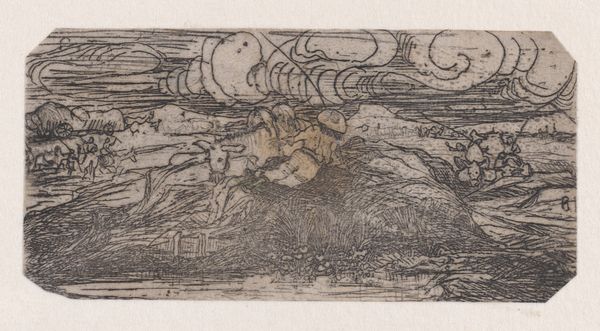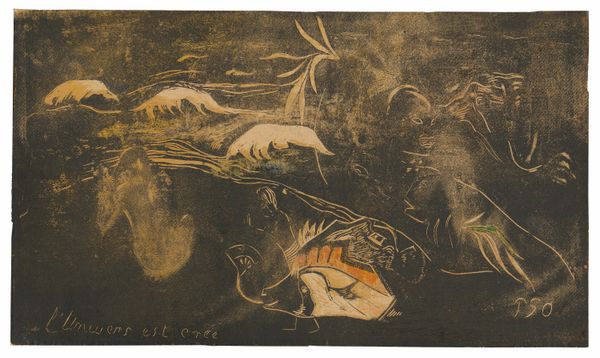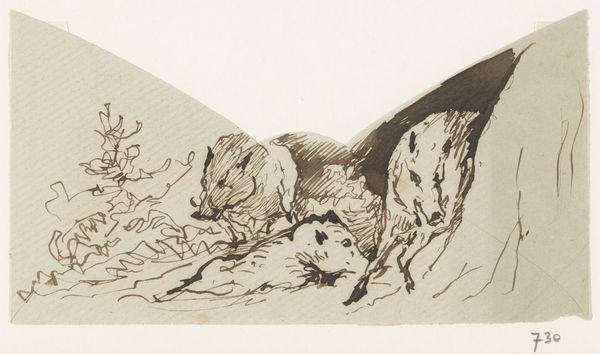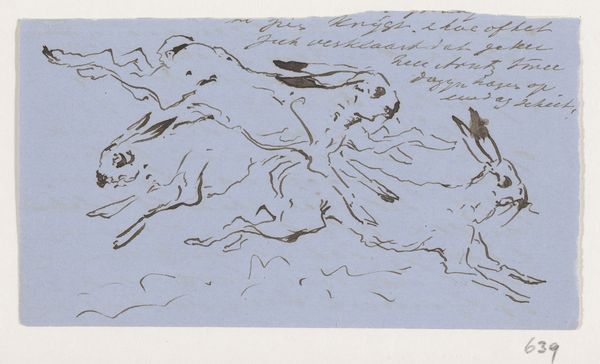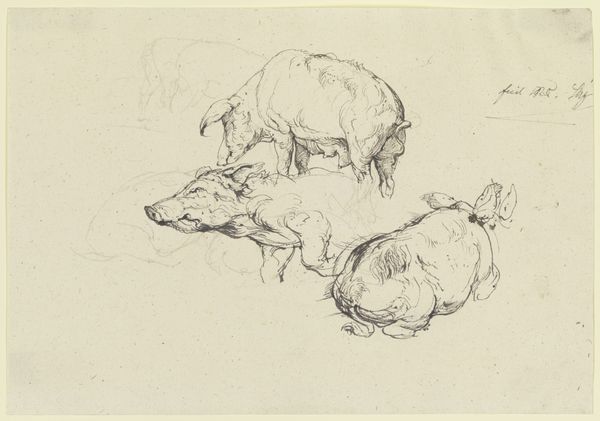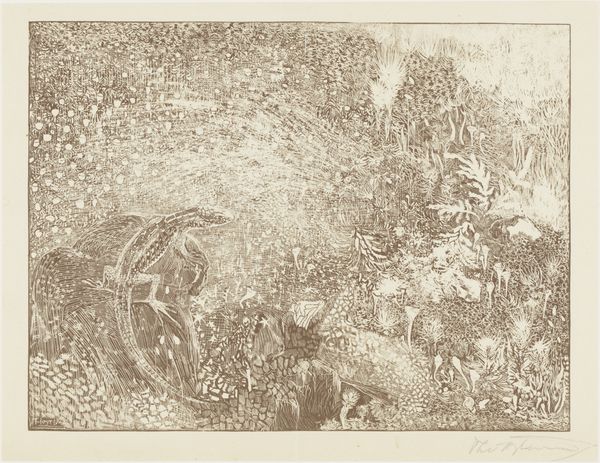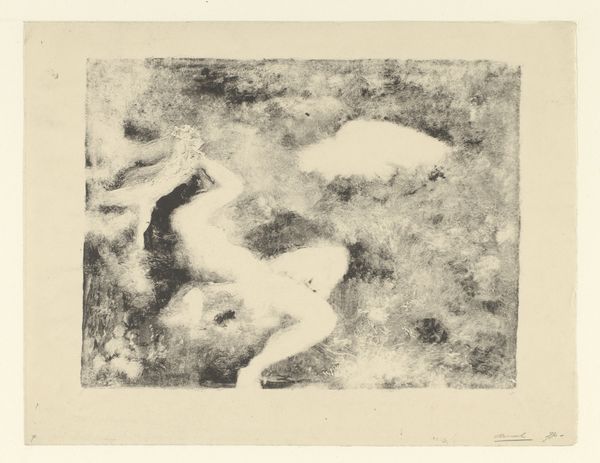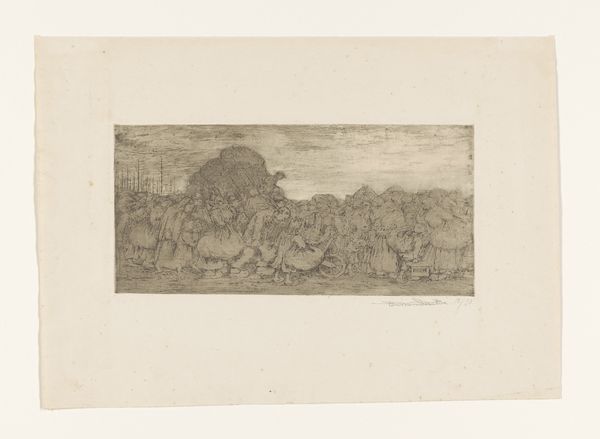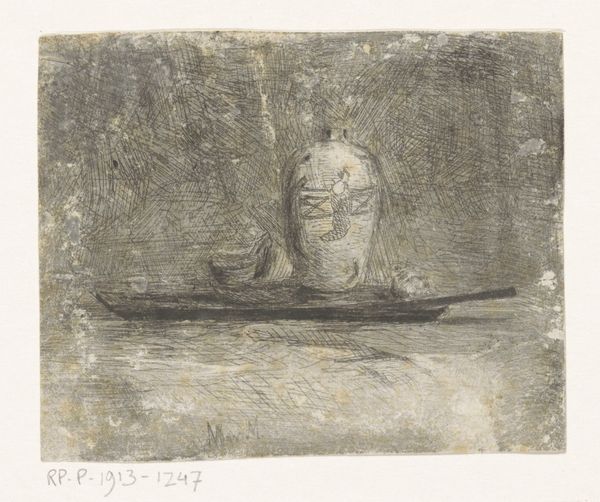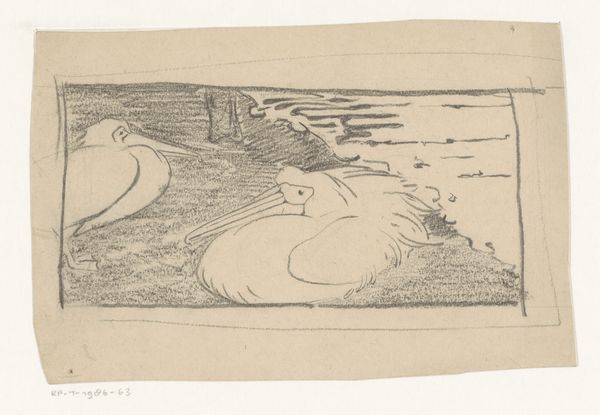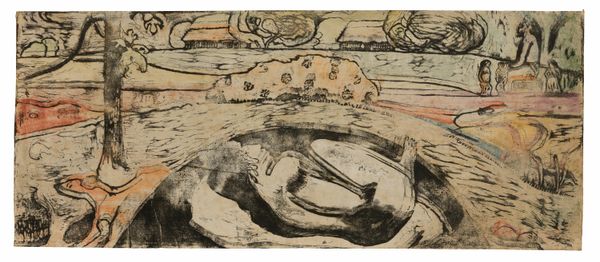
Dimensions: height 152 mm, width 209 mm, height 339 mm, width 464 mm
Copyright: Rijks Museum: Open Domain
Curator: Theo van Hoytema's "Vijf kuikens," or "Five Chicks," believed to be created sometime between 1878 and 1915. It’s a charming piece rendered with coloured pencils on paper. It is now part of the collection at the Rijksmuseum. Editor: Oh, how sweet! It's a tender, almost naive depiction. The soft colours and sketchy lines give it an immediacy, like a fleeting glimpse into the lives of these tiny creatures. It looks like they're huddling in a nest or foraging. Curator: It’s fascinating to consider this work within the context of genre painting and the rise of impressionism. Van Hoytema, while known for his decorative work and lithography, particularly for posters, captures a specific moment, imbuing it with the sentimentality of the time. Animal depictions were also part of commercial visual culture back then. Editor: Exactly. There's an undercurrent, isn't there? The work sentimentalizes the natural world but perhaps at the expense of really digging into these creatures. Does the painting portray chicks from factory farms? I doubt it. Are we encouraged to consider these little chickens as food or commodity? Probably not, and maybe there’s something revolutionary in that resistance? Curator: Interesting. From a more traditional art historical viewpoint, the emphasis on observation and the rendering of light—despite the subdued palette—aligns the artwork with Impressionistic tenets. Although it also reveals influences of Art Nouveau given the artist's other graphic work. The choice of colored pencils is telling, suggesting accessibility and intimacy. This makes the piece stand apart, compared to other contemporary chick art using paint medium during that time. Editor: Right, but accessibility can also be about accessibility of meaning and ideology, not only availability of media. The composition—the chicks clumped together, yet each with its own personality, all set on some gray, ambiguous ground – prompts a deeper reflection on their individual and collective vulnerability in relation to us, and of our larger ethical commitments, or not. What did people's experiences of industrialisation mean for artists working with rural themes? Curator: Well, these competing notions—nature versus artifice—became defining issues in late 19th century debates on industrialisation. Seen today, the artwork asks viewers to appreciate van Hoytema's attention to nature and light—especially when compared with some modern art that actively challenged academic values, but was equally removed from daily reality. Editor: For me, looking at it now prompts considering how art institutions legitimized genre painting’s moral messages back then, and still do, but also about thinking how images that touch us with such quiet emotion may generate broader compassion today too. Curator: It's been insightful viewing this quietly compelling, deceptively simple artwork together, a drawing that serves as both document of an era and also an enduring mirror. Editor: Yes, a window into then and a mirror for now.
Comments
No comments
Be the first to comment and join the conversation on the ultimate creative platform.
